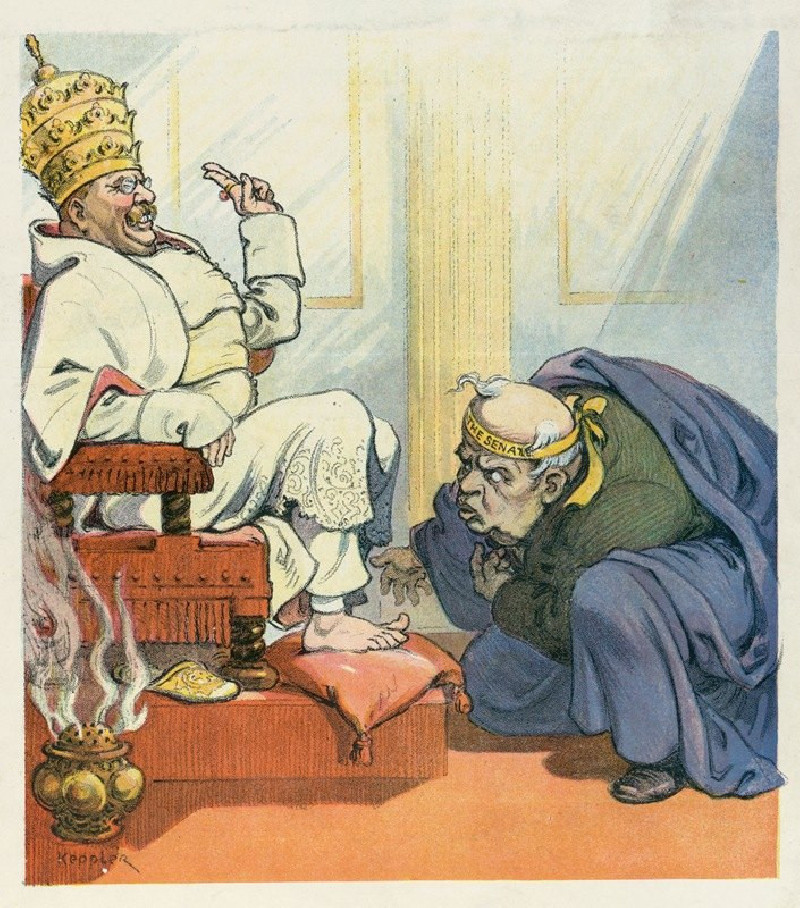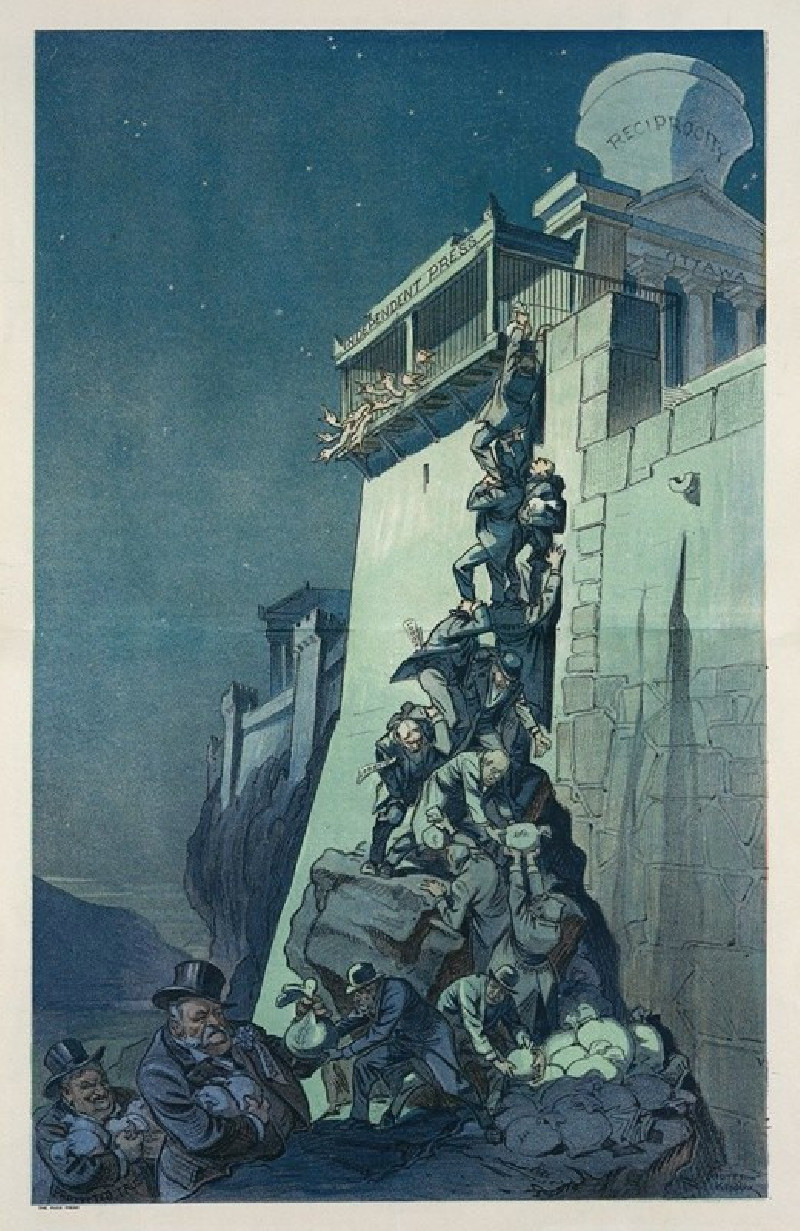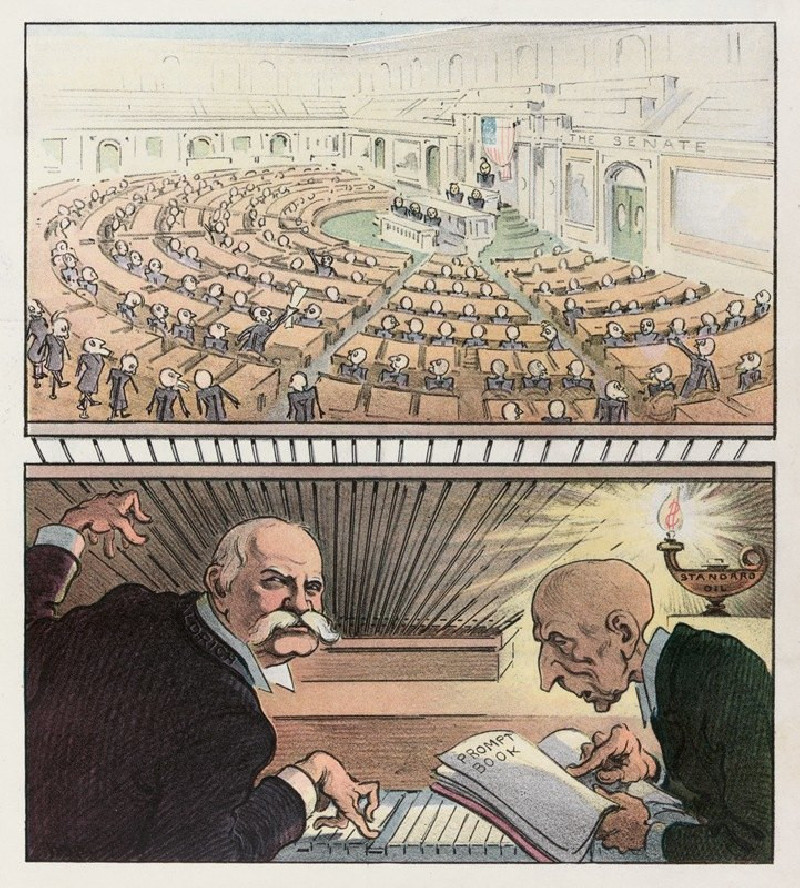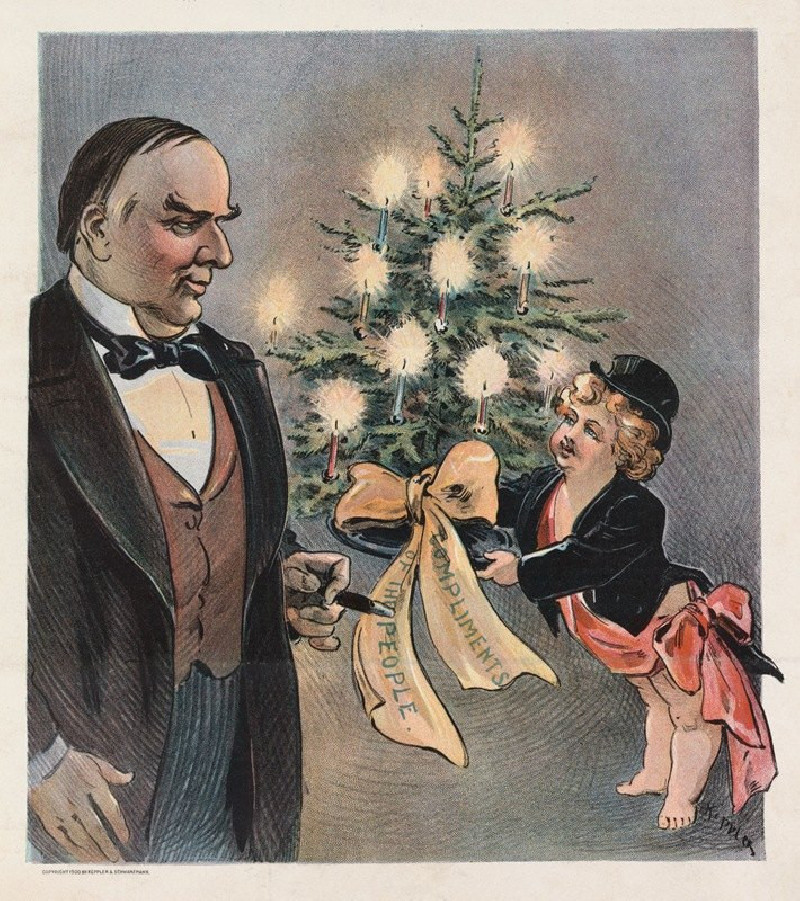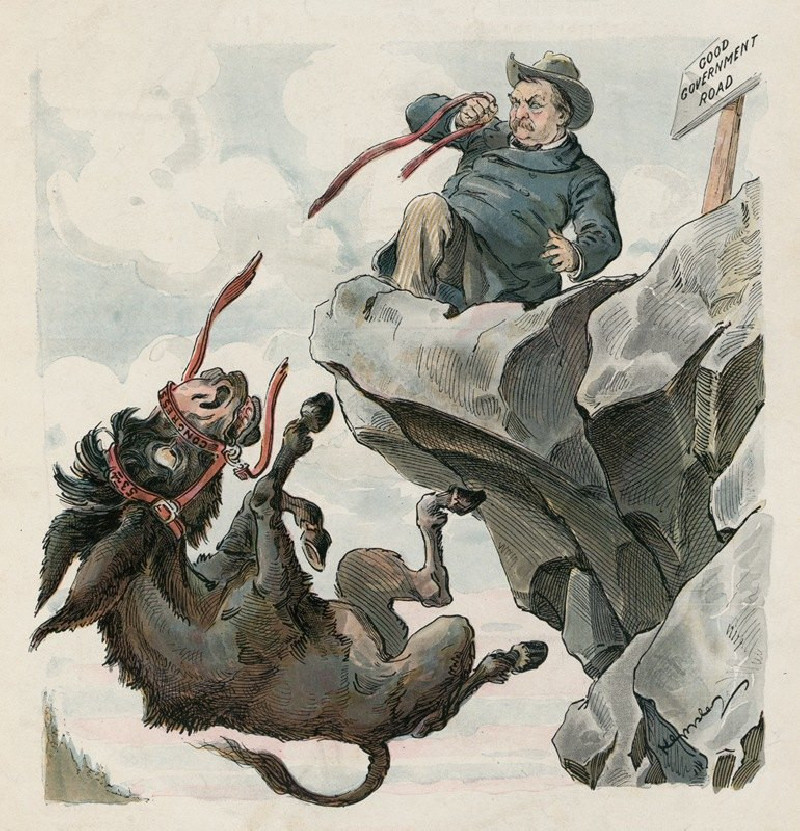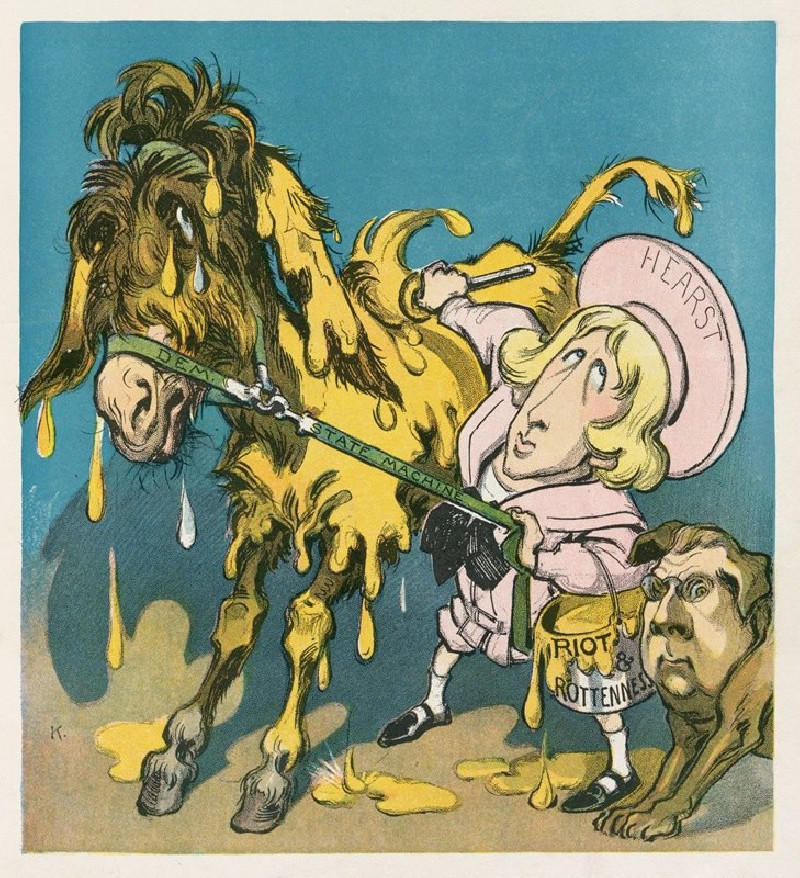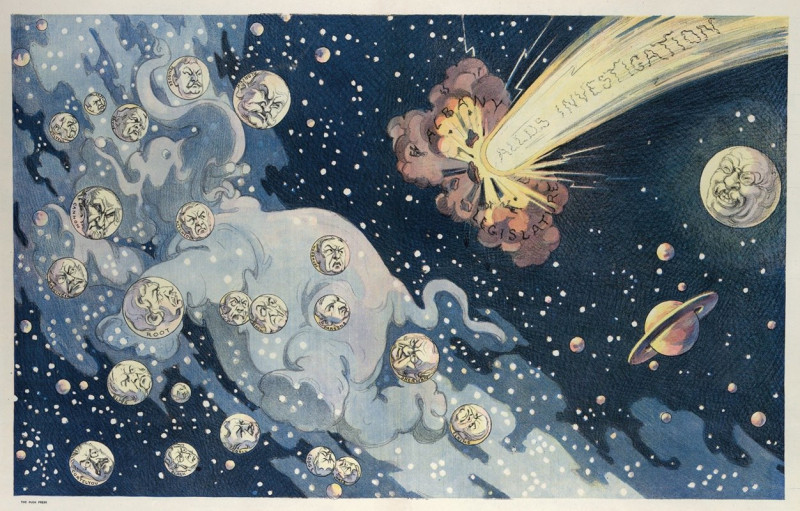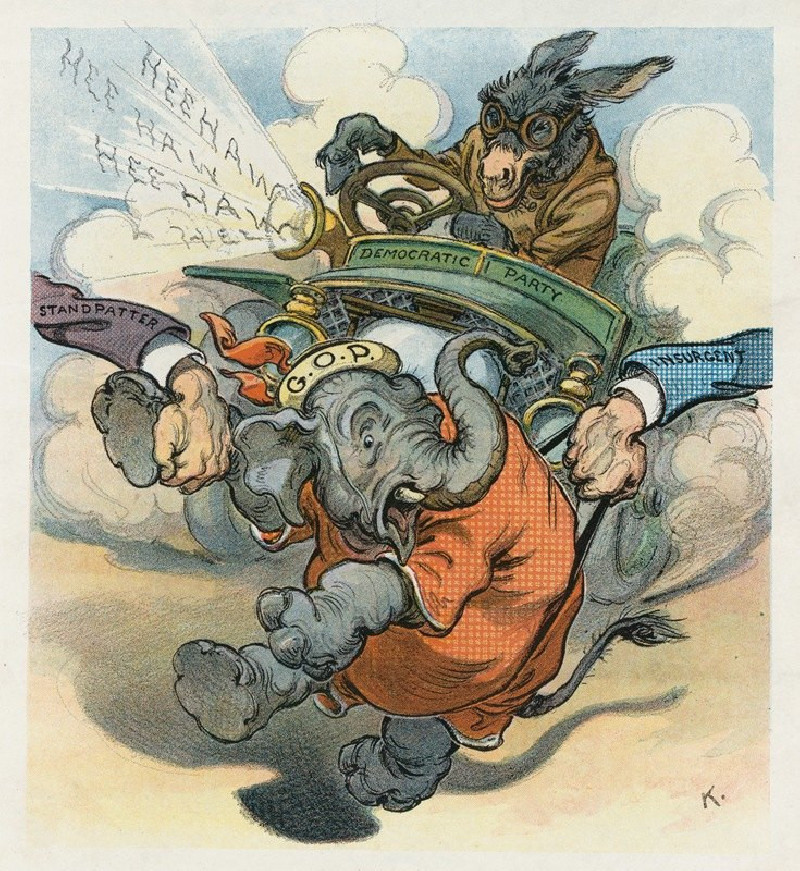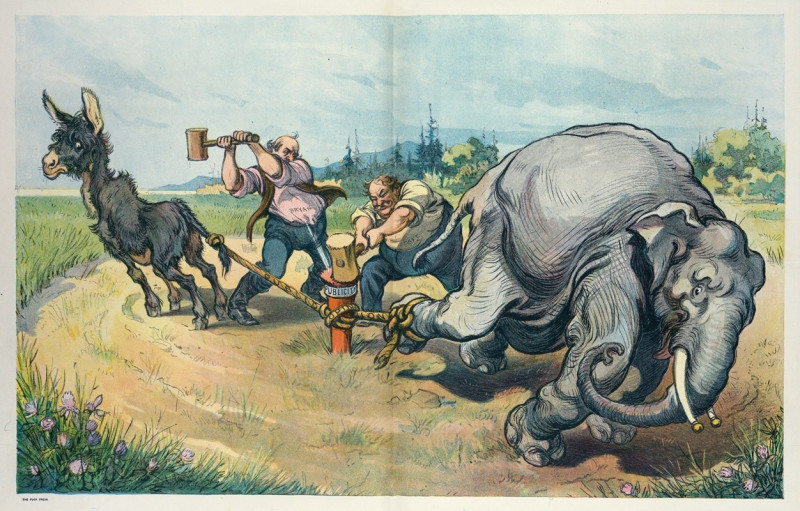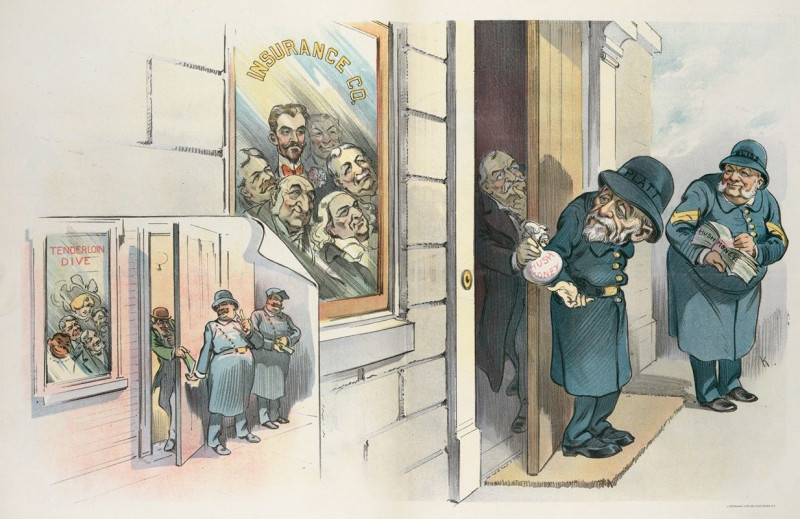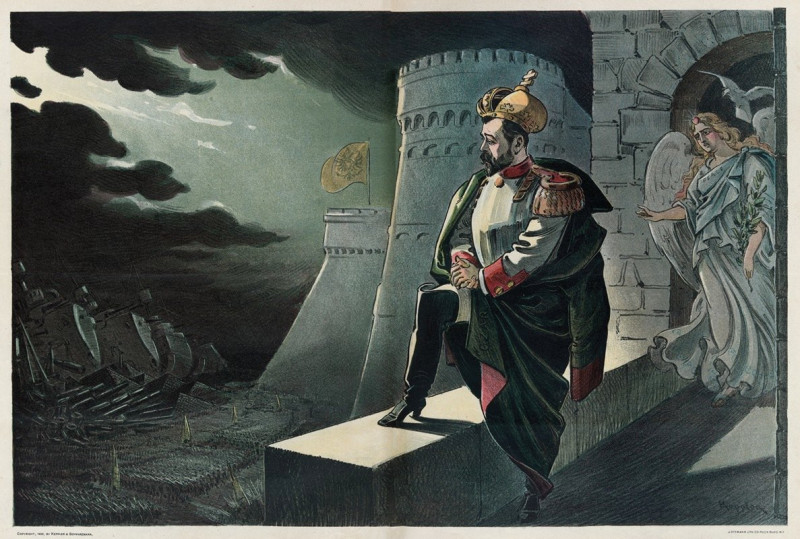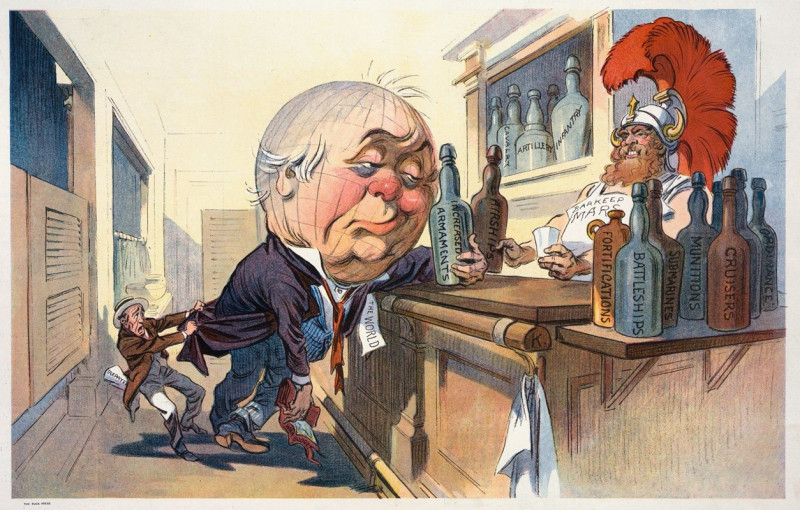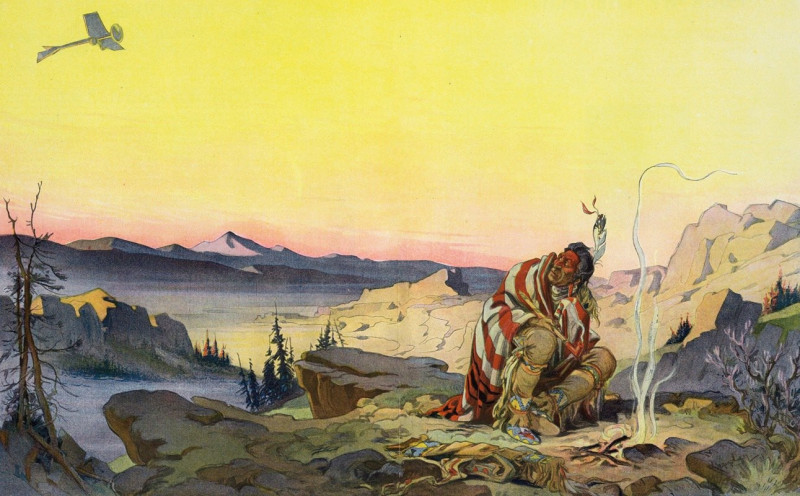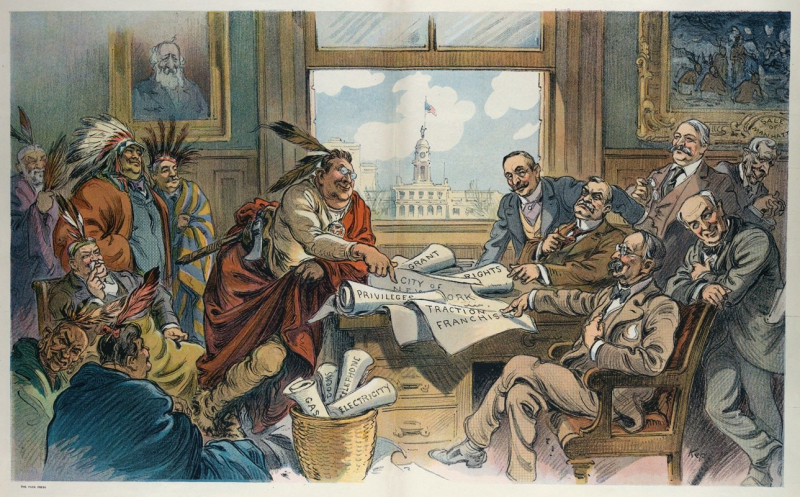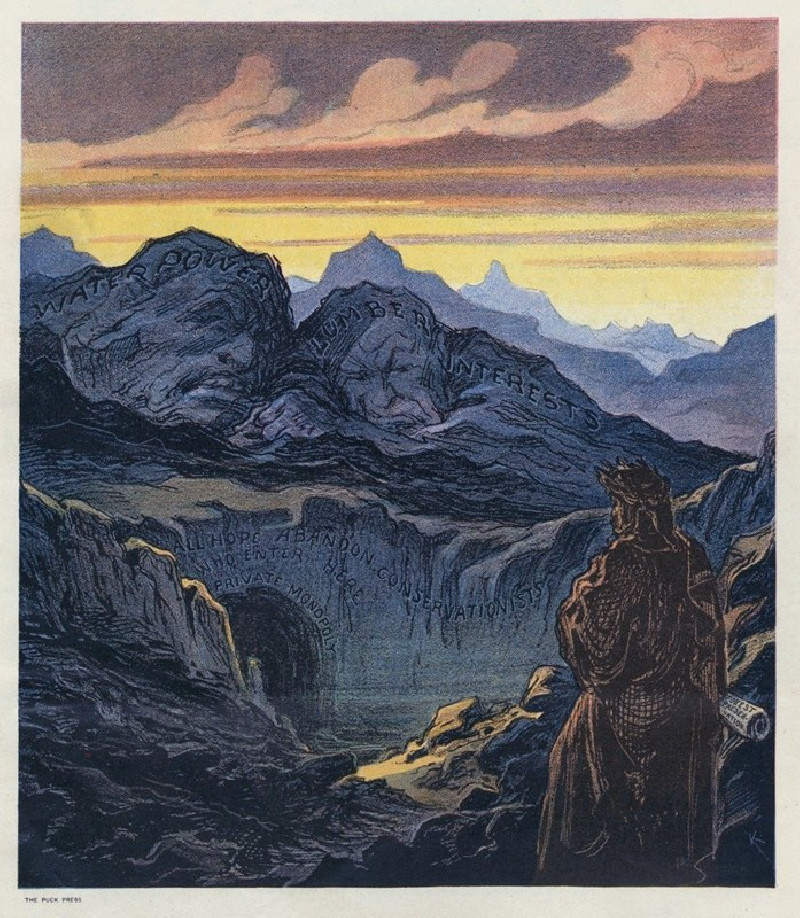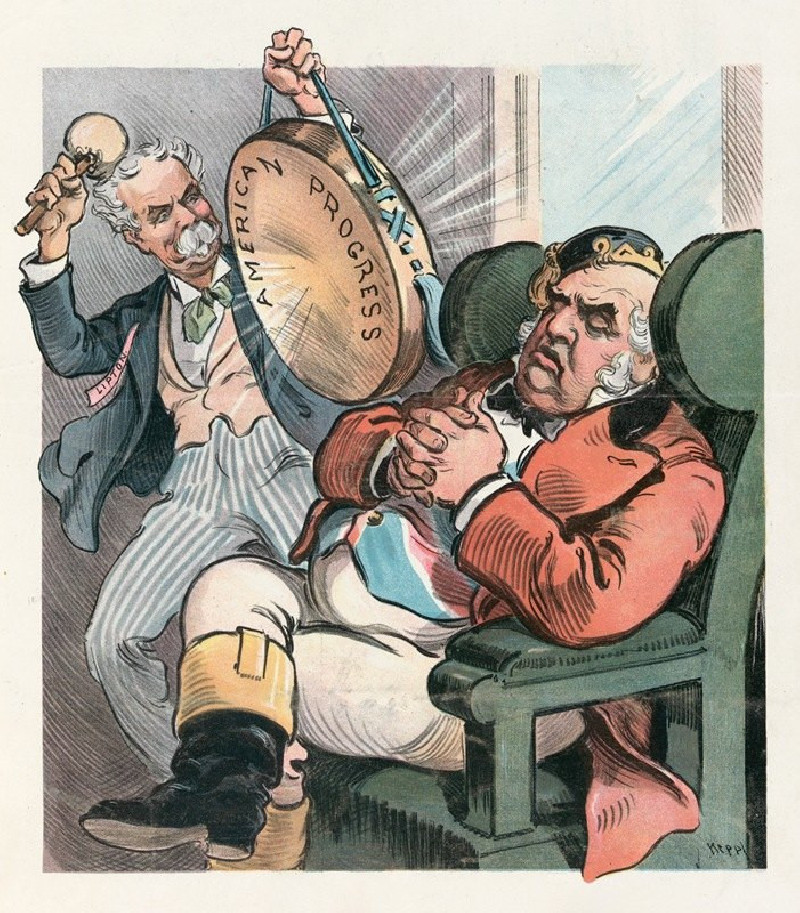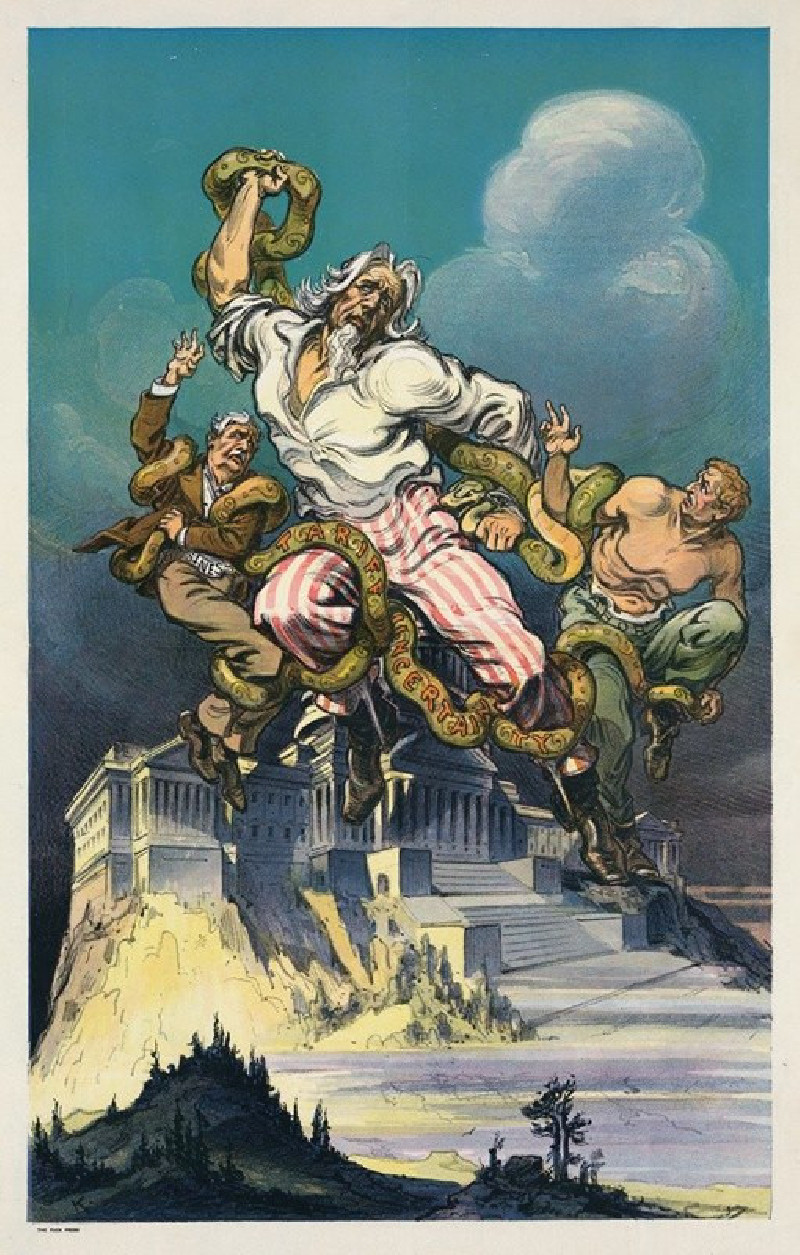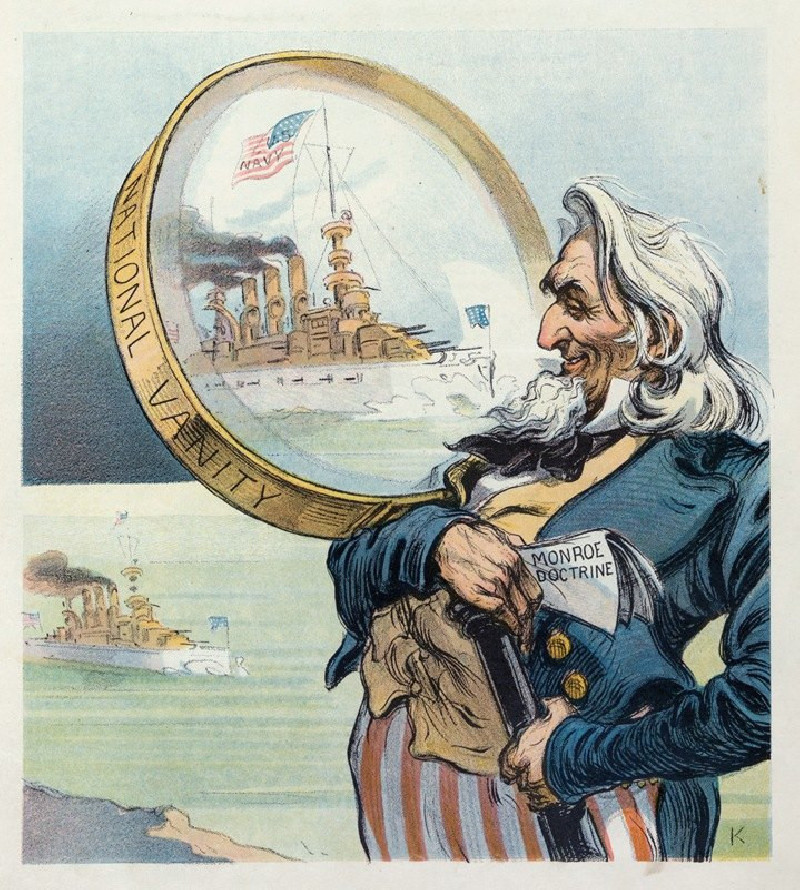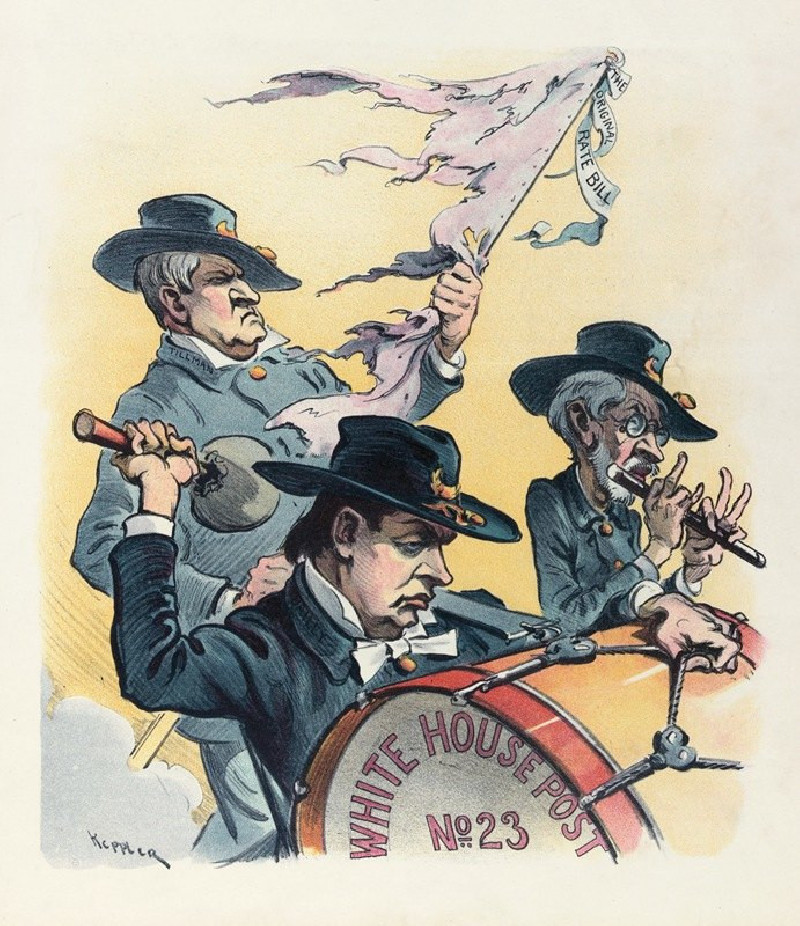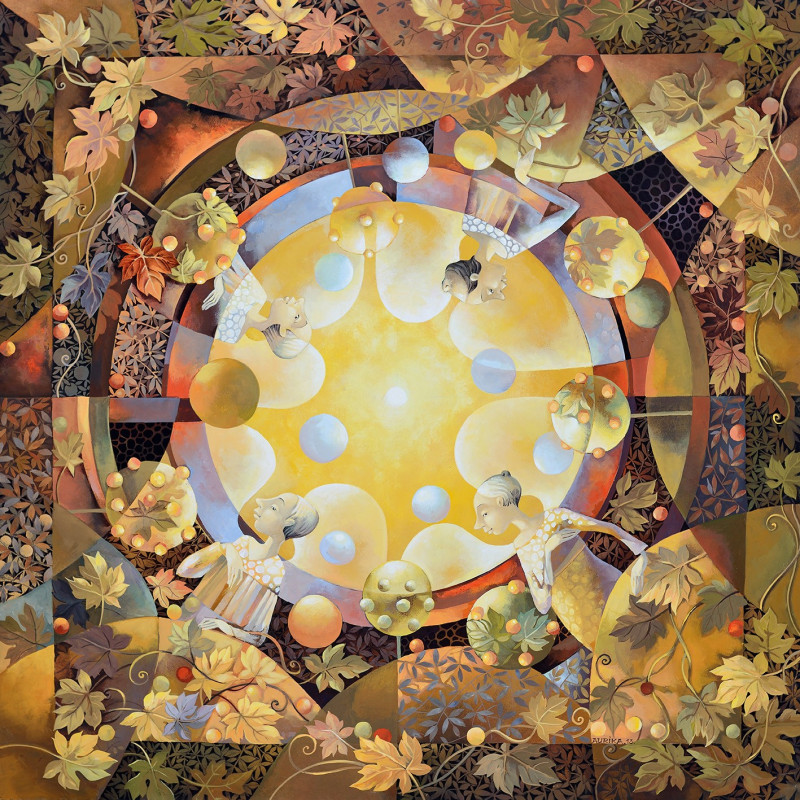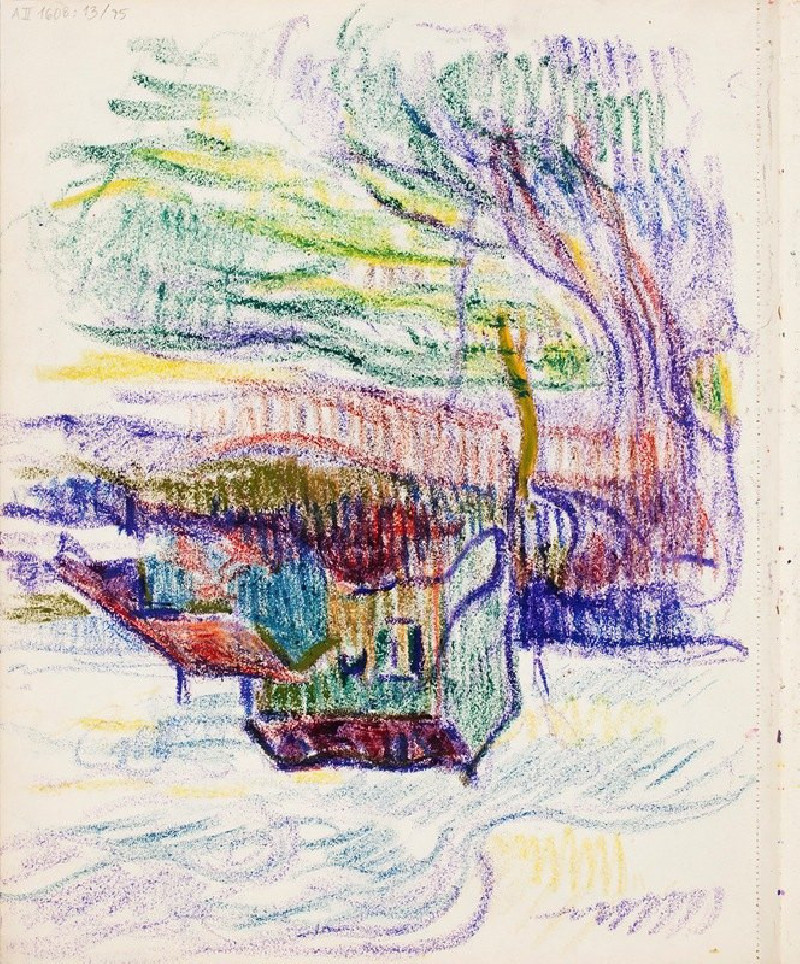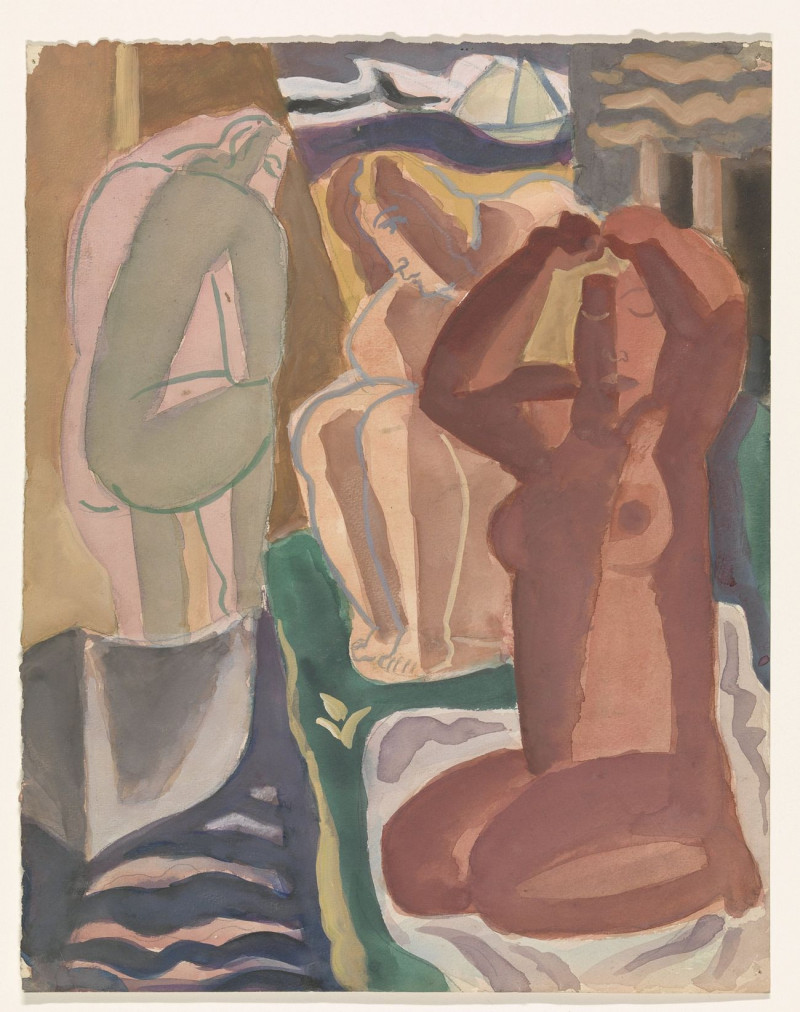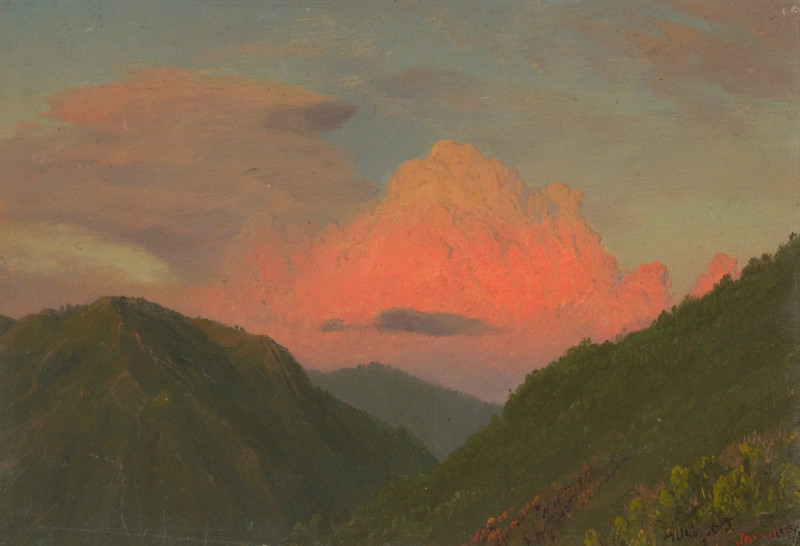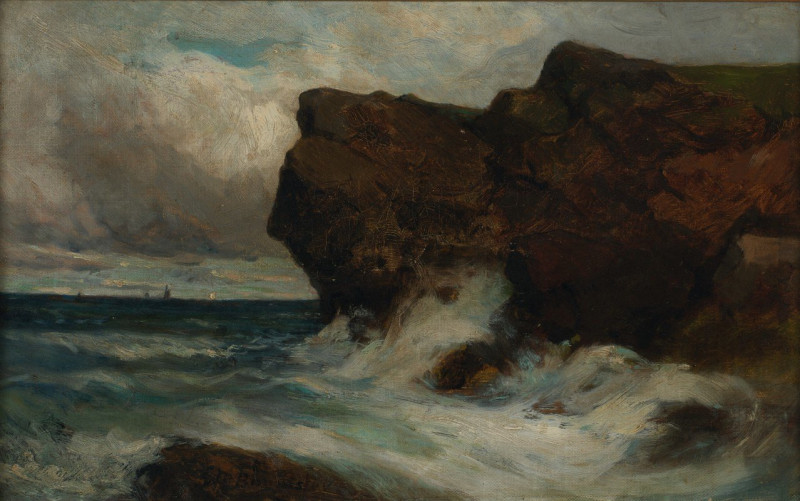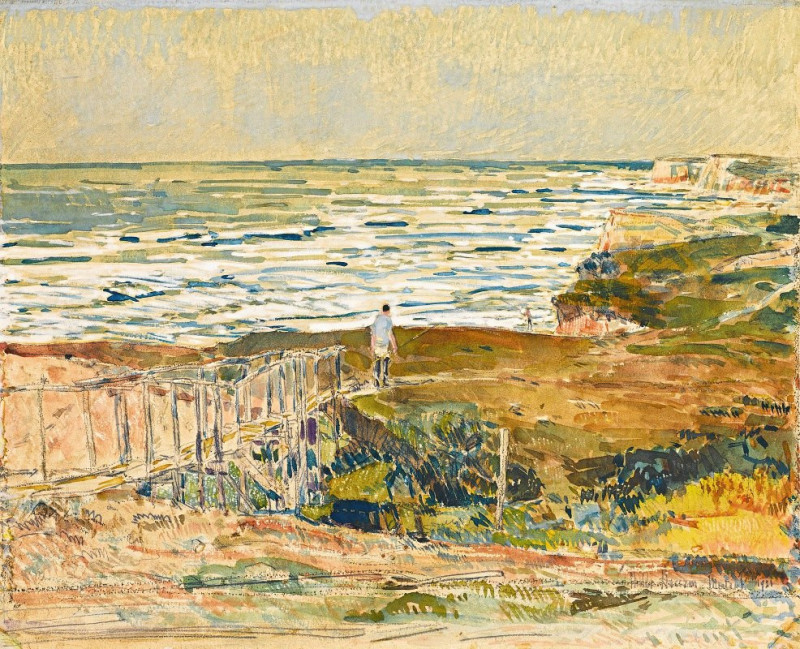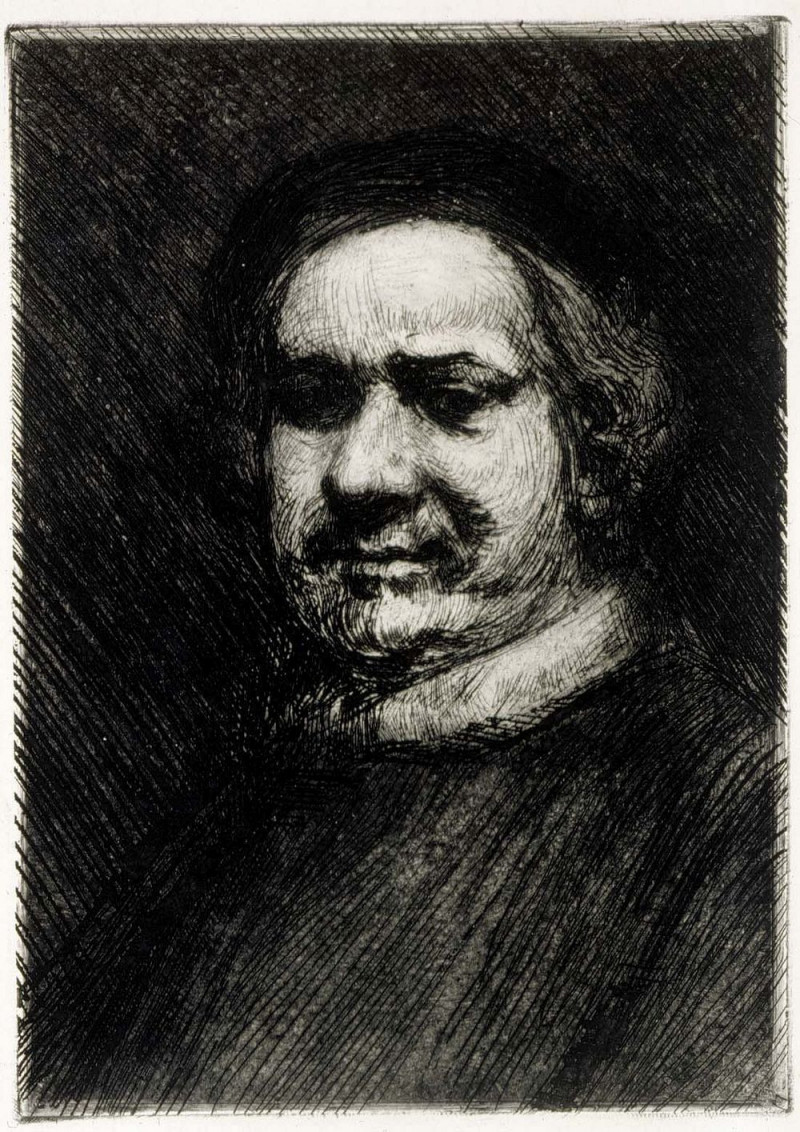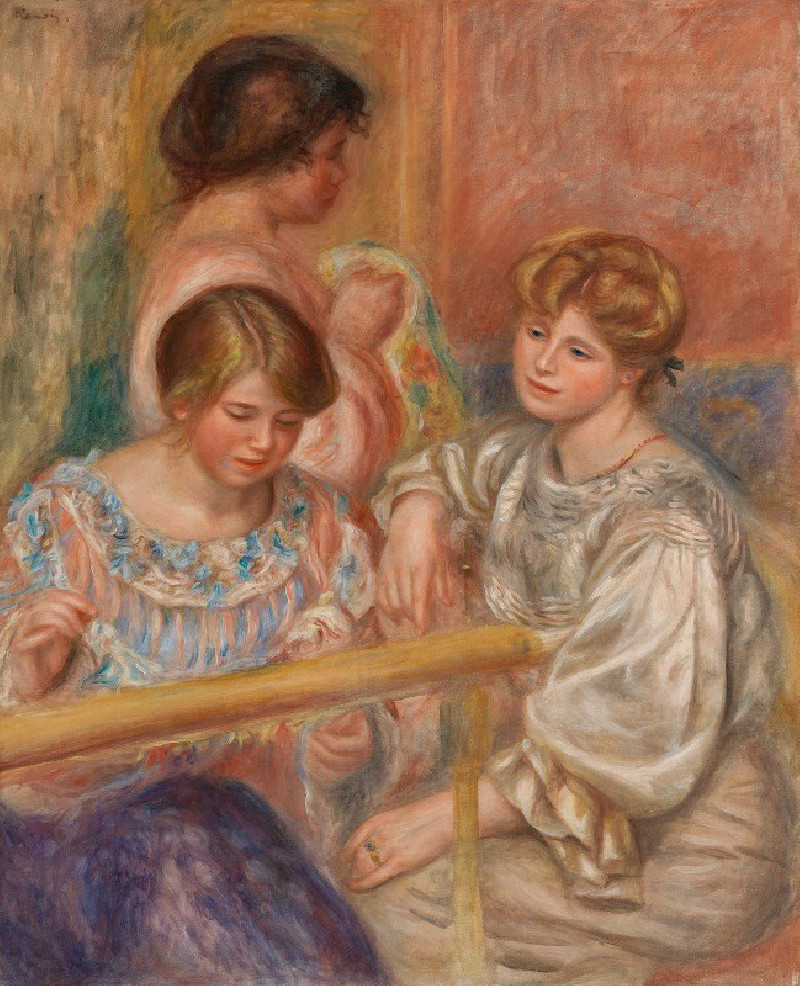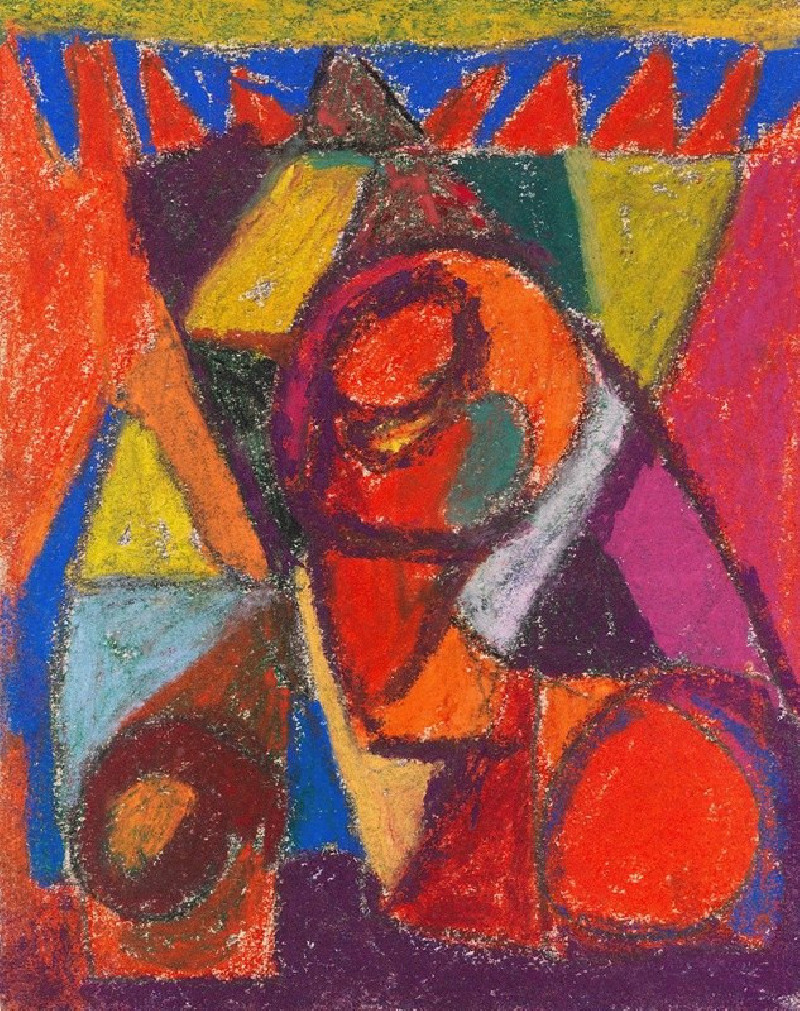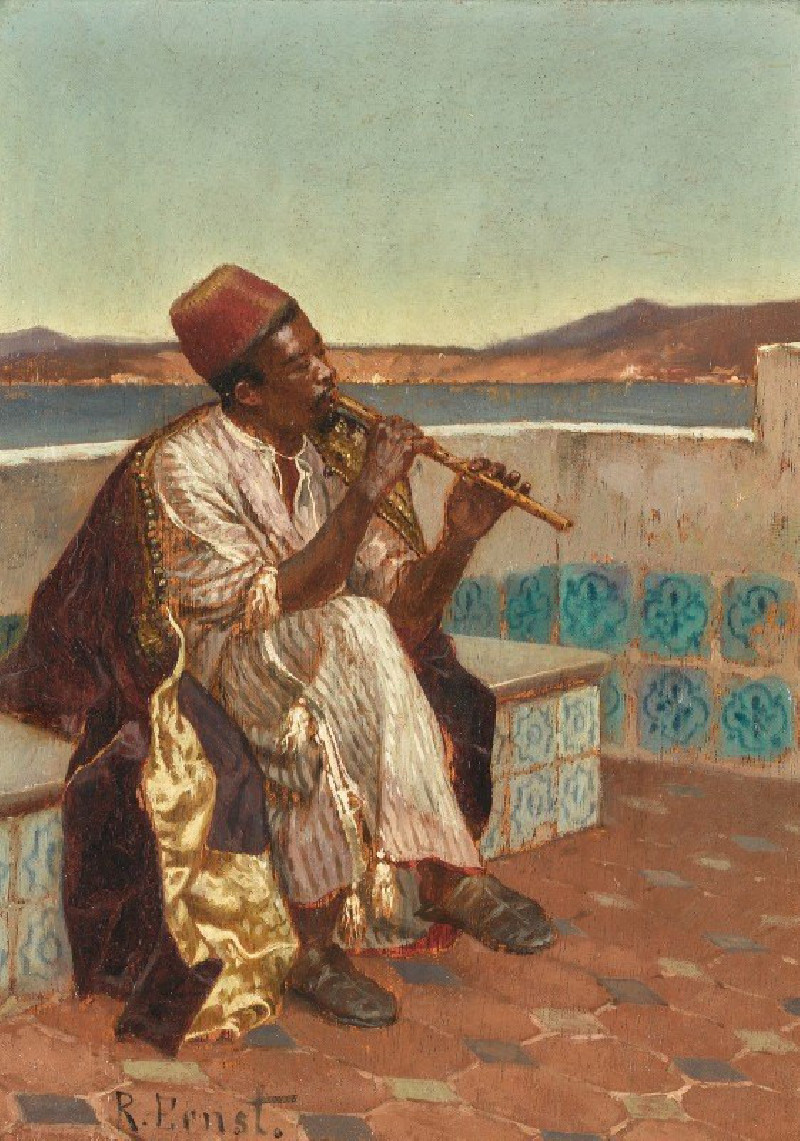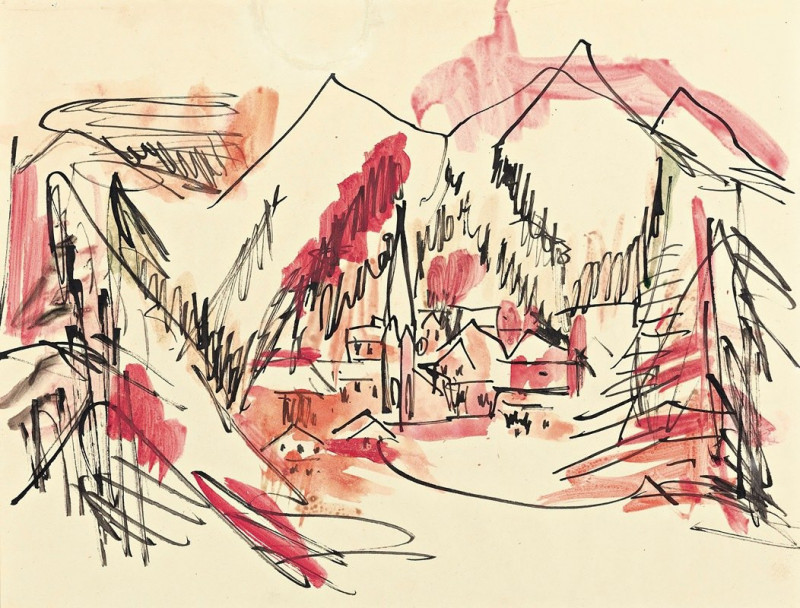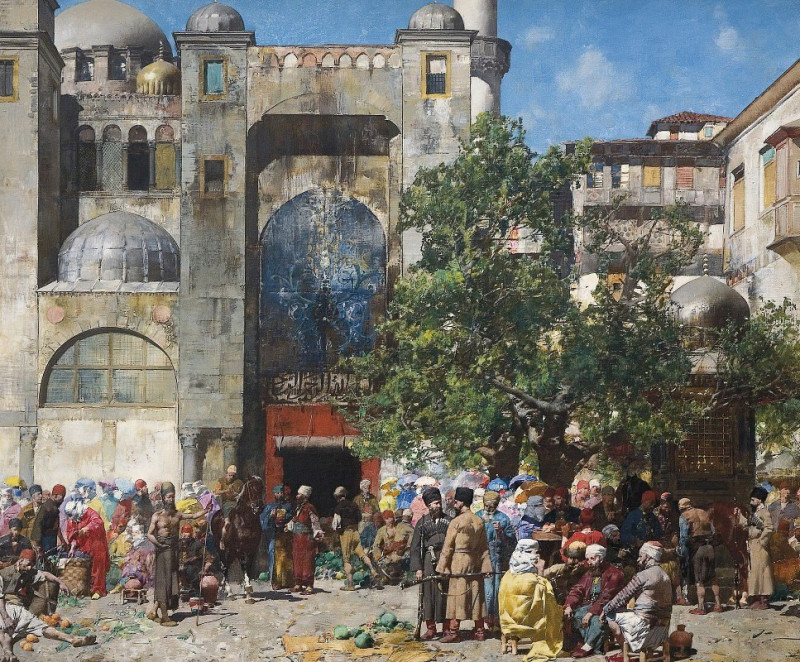Pope Theo the first (1907)
Technique: Giclée quality print
Recommended by our customers
More about this artwork
"Pope Theo the First," a striking illustration by Udo Keppler, presents a vivid commentary on influence and power dynamics in early 20th century politics. Created in 1907, this artwork offers a satirical view of Theodore Roosevelt, depicted as a luxuriantly robed pope, embodying the artist’s critique of Roosevelt's authoritative reach, particularly in his domestic policies and perhaps his overarching influence in matters traditionally outside presidential purview.In the painting, Roosevelt, regally adorned with a tiara and ornamental robes, sits comfortably, a serene yet sly expression playing across his face as he puffs on a cigar. His posture and attire suggest a pontifical authority as he presides not over spiritual realms but political landscapes. Beside him, a figure representing the U.S. Senate crouches, portrayed in a more somber, subservient manner. This senator, his garments plain and his expression one of wary resignation, is marked by a headband labeled "Senate," emphasizing his institutional role and his subdued position in relation to the commanding 'Pope'.Keppler's use of vibrant colors and exaggerated characters enhances the satirical edge of the piece, making it not only a visual feast but also a poignant political statement. The contrasting expressions and the interaction — or lack thereof — between the two figures highlight the tension and critique inherent in the artist’s message.This potent illustration from Udo Keppler remains an important cultural artifact, reflecting the ongoing dialogue about the balance of power within the United States government and the perception of its leaders.
Delivery
Returns
Udo J. Keppler, since 1894. known as Joseph Keppler, Jr., was an American political cartoonist, publisher, and Native American advocate. The son of cartoonist Joseph Keppler (1838–1894), who founded Puck magazine, the younger Keppler also contributed to cartoons, and after his father's death became co-owner of the magazine under the name Joseph Keppler. He was also a collector of Native American artifacts.

